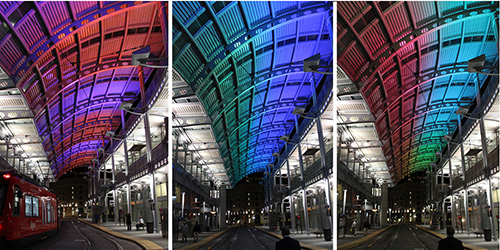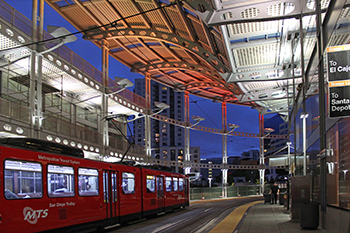How to Make the New California Building Code Work for You
 By Guest Blogger Jim Montross
By Guest Blogger Jim Montross
As a heat wave crosses California this week, we asked ourselves what we should expect in the summer months. Will we experience some rolling brown outs this year? Will we see a spike in our energy consumption, and in our bills?
This year, a revised edition of the Building Energy Efficiency Standards, commonly known as Title 24, will be released. Updates to the code occur every three years and are meant to routinely improve the performance of new construction in California. According to the California Energy Commission, the 2013 standards are at least 30% more efficient than the previous code for non-residential buildings.
"Improving the energy efficiency of buildings in which we will live and work will save Californians energy for decades," said Energy Commissioner Karen Douglas. "These Standards will help save consumers money on their utility bills, keep them comfortable in their homes, and reduce greenhouse gas emissions through better, more efficient buildings."
When the 2013 Building Energy Efficiency Standards are adopted on July 1, 2014, drastic changes will impact most tenant improvements and all new construction in a variety of ways. While there are benefits to the code changes, we think you should be aware of some of the costs you might experience as it relates to lighting design. For instance, the cost impact of all the combined changes could be as much as $5 to $7 per square foot.
 Lighting code changes affect all areas of the building—interior and exterior. Mandatory controls include familiar controls in previous code editions, such as manual on/off, as well as multilevel control of lighting in an enclosed space. The multi-level control requirement is even more refined in the new code, essentially requiring all lighting to be dimmable.
Lighting code changes affect all areas of the building—interior and exterior. Mandatory controls include familiar controls in previous code editions, such as manual on/off, as well as multilevel control of lighting in an enclosed space. The multi-level control requirement is even more refined in the new code, essentially requiring all lighting to be dimmable.
All indoor lighting will be controlled with an occupant sensor, automatic time switch control or other control to automatically shut lights off when the space is unoccupied. It is now mandatory to use sensor controls in offices less than 250 square feet, multipurpose rooms less than 1000 square feet and conference rooms and classrooms of any size.
Luminaires providing general lighting that are in the Skylit Daylit zones or Sidelit Daylit Zones will be provided with automatic dimming controls to reduce the light output in response to available sunlight, to maintain a constant light level in these daylit zones.
Three new additions in the code that may cause a significant cost impact to your project are:
- If your project modifies at least 10% of the fixtures in the remodeled space, then Title 24 requires that you update all the lighting in your space to meet the new requirements, including lighting power density and controls. For instance, if you have 100 lighting fixtures in your office and plan to change 10 of those fixtures in any way, those modifications must be in line with the new energy code and applied to all lighting in your office. If you’re changing nine or fewer fixtures, applying the new code across your space is optional.
- Regulations around photovoltaic (PV) systems are evolving. Under the new Title 24 requirements, if your space is larger than 10,000 square feet, you will need to reserve 15% of your roof area for future PV systems. Even if you do not intend to install PV arrays on your roof, space must be reserved in the plans. This code requirement is hinting toward the future of PV in upcoming code revisions.
- You have likely experienced rolling brown outs during summers past. In an effort to minimize this for the future energy companies will initiate a signal that they are reaching full capacity. This is known as demand response control. Upon receiving this signal, all spaces larger than 10,000 square feet need to have a system that will reduce the lighting power by 15%. The hidden cost here is that in order to achieve this 15% reduction, your building needs an automatic lighting control system capable of receiving this signal.
There is good news—these changes will save energy and will show a payback to your investment. Additional benefits include better lighting, better control, less maintenance through longer lamp life, increased use of daylight harvesting and a more sustainable design. We want you to be aware of the costs that can arise under the new code so that you can be prepared to reap the benefits of these changes. Leave us a comment below with any questions about the new code, and we'll be happy to clarify any confusing points.
With more than 30 years of experience in the architecture and engineering industry, Jim Montross, PE, has played a key role in LPA's integrated design process. He’s left his mark on nearly 50 corporate and educational projects which include work at The Orangewood Academy, Grossmont High School and Warner Middle School, to name a few. Montross is a LEED BD+C accredited professional and he also specializes in architectural lighting design/consulting.
